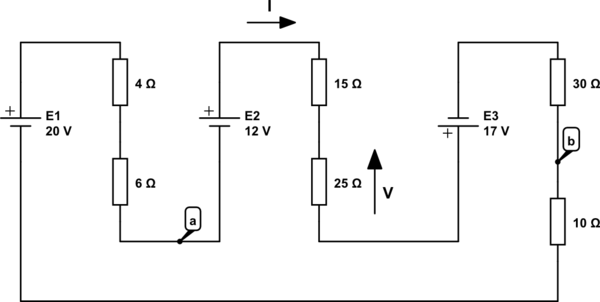I have just started learning about electric circuits, so I hope you'll be patient :)
I am trying to solve for the current \$I\$ in the problem below, but (after much googling and reading) I cannot figure out how the current behaves between \$E_1\$ and \$E_3\$.
I discovered that \$-12+15i+25i+17+30i+10i-20+4i+6i=0 \implies i=0.17A\$, which is correct, but I cannot explain why \$30i\$ and \$10i\$ are positive.
Could anyone explain this to me, please.


